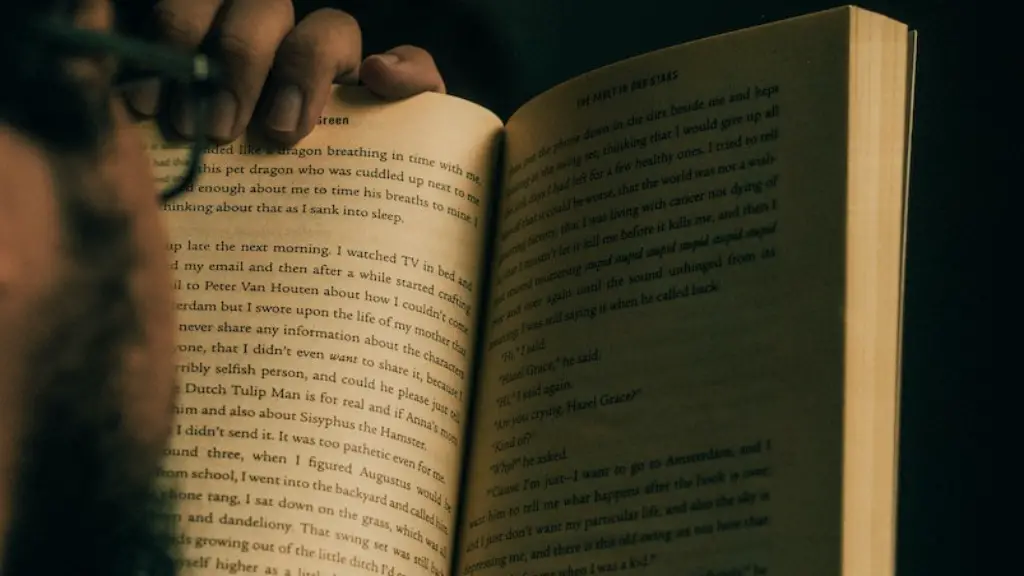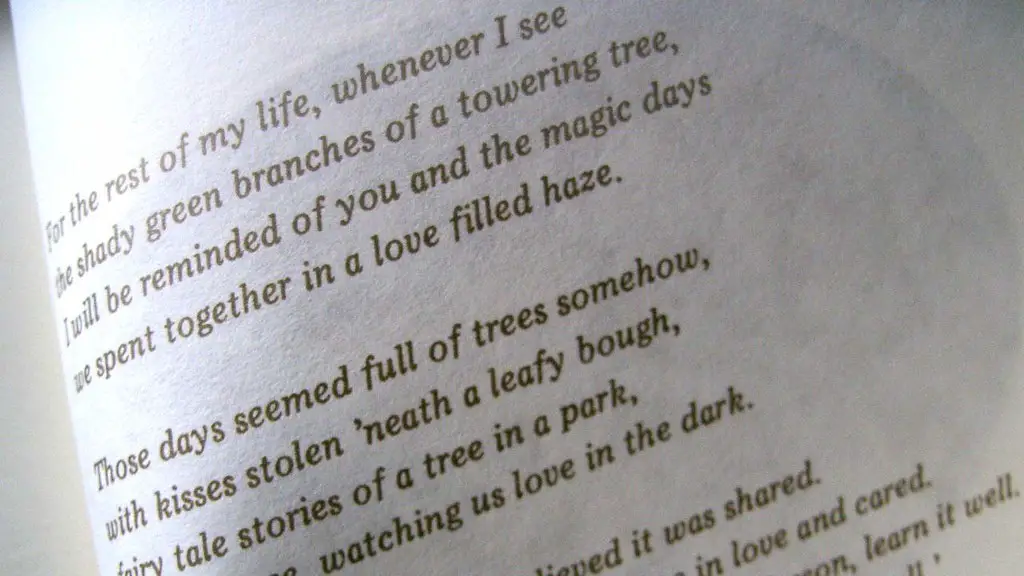What is Romantic Poetry?
Romantic poetry is an artistic movement that began in the late eighteenth century when writers reacted to the social and political environment of the time. It is associated with nature, emotion and freedom of expression, and often uses symbols to represent these concepts. Romantic poets tried to elevate society and celebrate the individual spirit by expressing emotions and allowing their creativity to flow freely. As such, the main characteristic of romantic poetry is the emphasis on emotion and on conveying those emotions through powerful imagery.
The vision of romantic poetry was of a world that was infinite, grand and ever changing, rather than a closed and limited one. A key feature of romantic poetry was the evocation of feelings, such as joy and sorrow. This was achieved by using powerful language, imagery and symbolism. For example, the theme of death was often used to evoke feelings of sadness or a loss of innocence. This was typically done through evocative language and imagery, such as a “wind-whipped sky” that foretells of disaster.
Other important characteristics of romantic poetry include the use of figures of speech, such as personification and metaphor, to express ideas and feelings. Imaginative symbolism and references to the natural world were also important in the poetry of the romantic age. Nature was seen as a source of solace and beauty, and poets used imagery and symbols to describe it. For instance, they frequently used natural elements, like a stormy sea or a serene meadow, to create a sense of beauty, awe or serenity.
The use of irony and a sense of mystery was also present in romantic poetry, often through the use of hidden meanings and implied meanings. Poets used these techniques to evoke feelings of imagination and mood, or to prompt pondering and deeper thought. A great example of this technique is Wordsworth’s famous poem, “The World is Too Much with Us.” In the poem, Wordsworth talks about how the world has overwhelmed him, but the actual meaning of the poem goes much deeper than that, exploring mortality and the human condition.
Love and passion
A major characteristic of romantic poetry was the frequent use of themes about love and passion. Poets used love and romance to escape from their everyday world and explore their innermost thoughts and feelings. They wrote with a heightened sense of emotion, depicting life as bittersweet and full of longing. This was done using imagery and symbolism to bring out the emotions associated with love and passion. In a sense, it was a form of escapism, allowing poets to transport their readers to a world of beauty and emotion.
Love was seen in a symbolic and spiritual sense, as transcending physical love, and often spoke of the beauty of nature or the power of the universe. It was a way of expressing the sublime, or a sort of divine power that lies beyond the mundane. Poets used imagery and language to evoke awe, mystery and beauty in the reader. They used the power of words to convey the depth and intensity of their love and affection. A great example of this is John Keats’s famous poem, “Ode to a Nightingale.” In the poem, Keats uses powerful imagery and symbols to evoke the feeling of love and of being in the presence of something beautiful and immortal.
The sublime
Romantic poetry was often about the beauty of the sublime, or of the infinite and incomprehensible power of the universe. This sense of awe and mystery was often embodied in nature and its beauty. Poets used descriptive language and imagery to capture the power of the environment and its mysterious force. They used the power of words to evoke feelings of fear, awe and wonder. An example of this is William Wordsworth’s poem, “Lines Composed a Few Miles Above Tintern Abbey.” In the poem, Wordsworth uses beautiful language and imagery to express his appreciation and awe of nature, and to show its power.
The sense of the sublime was often linked to the power of imagination and of creative expression. Some poets saw imaginative freedom as a way of unlocking the power of the sublime, allowing them to explore the infinite possibilities of life. This was often seen in the use of surreal imagery and fantastical elements. Poets also used language to explore psychological themes and delicate emotions, often through the use of symbols. As such, romantic poetry is usually seen as being deep and emotive, rather than shallow and superficial.
Nature and freedom
Nature was an important source of inspiration for romantic poets and many focused their writing on the beauty of nature and its power to evoke emotion. Nature was seen as a symbol of freedom, and provided a direct contrast to the restrictions that society placed on individual expression. Poets used nature to express their feelings of freedom and creativity, which was often a way of escaping to another world. In many respects, nature was a metaphor for the poets’ feelings of being trapped and longing for freedom and escapism.
The beauty of nature was often used to evoke feelings of awe and transcendence. The vastness and mystery of nature provided a source of escapism, allowing the poet to explore the bigger power of the universe. Poets such as William Wordsworth and John Keats were often inspired by the beauty of nature as a way of expressing their feelings of joy, sorrow and longing. As such, nature and its beauty was seen as a way of expressing the complexity of the human condition.
Transformation
The concept of transformation was also an important theme in romantic poetry. Poets often spoke of change and renewal, as a way of expressing their feelings of hope in a seemingly infinite and ever-shifting universe. This was often used to express the idea that life is constantly changing and evolving, which could then be cathartic for the poet. By expressing their emotions in this way, poets could explore their innermost thoughts and feelings, and transform their experiences into meaningful works of art.
The theme of transformation was also used to explore the idea of nature as a source of renewal and healing. By exploring the beauty of nature, poets were able to transcend their physical space and connect with a source of power beyond themselves. This power was often seen as a source of healing and hope, in an otherwise dark and uncertain world.
Conclusion
The major characteristics of romantic poetry are the focus on emotion and the use of powerful language, imagery and symbolism. Nature and freedom are often used as concepts to explore the beauty of the sublime and the power of transformation. Love and passion are frequently used as a source of inspiration, as well as the power of imagination and creative expression. The poetry of the romantic era was often seen as a form of escapism, allowing poets to explore their innermost thoughts and feelings in a world of beauty and emotion.



